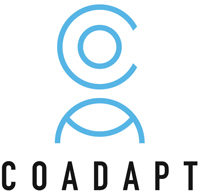This use case for the Smart Shift Scheduling is run by the FIOH.
The association of some working hour characteristics with sickness absence, retirement intentions and work ability change with age. Therefore, work time planning with computerized methods should be developed to age-specific recommendations for ageing employees.
The study plan:
- The use of the worktime planning tools (Titania®, CGI Finland Ltd) will be studied in a quasi-experimental intervention study comparing the use of two Titania tools (intervention group using a participatory worktime planning tool) to a compared to a control group remaining in traditional scheduling.
- Economic analysis of the intervention will be carried out using information on the costs of the programs, and savings from the
reduced sickness and other work absence.

Methods
- The estimated no of employees will be 50.000 in the registry cohort and the final follow-up up to 4 years.
- The questionnaire and registry data from 2015 will be linked to 2017 (preliminary results) and 2019 (final results, larger sample) after the natural interventions.
Progress so far
FIOH has collected pay-roll based working hour data from 10 hospital districts. Based on our pilot study (n=238 shift planning units with more than 9 000 employees) the use of the smart shift scheduling tool resulted in significant decrease in sickness absence on unit level. According to preliminary analysis sickness absence was associated especially with long working hours and decreased recovery between the shifts (i.e., short shift intervals). We assume that if the smart shift scheduling tool will be used to shorten the working hours and to improve recovery between the shifts in addition to improving worktime control, our ongoing wide-scale intervention to use smart shift scheduling software will decrease sickness absence remarkably among the older employees.
Preliminary results from first hospital districts were presented in 24th International Symposium on Shiftwork and Working Time 2019, 9-13.9.2019, USA. The final data collection (4 year follow-up) will end in spring 2020.
Related to the Working Hours in the Finnish Public Sector study, our press release is available (unfortunately only in Finnish and Swedish) (https://www.ttl.fi/epasaannolliset-tyoajat-lisaavat-sairauspoissaolojen-riski
a-ja-sydansairauksien-riskitekijoita/)
